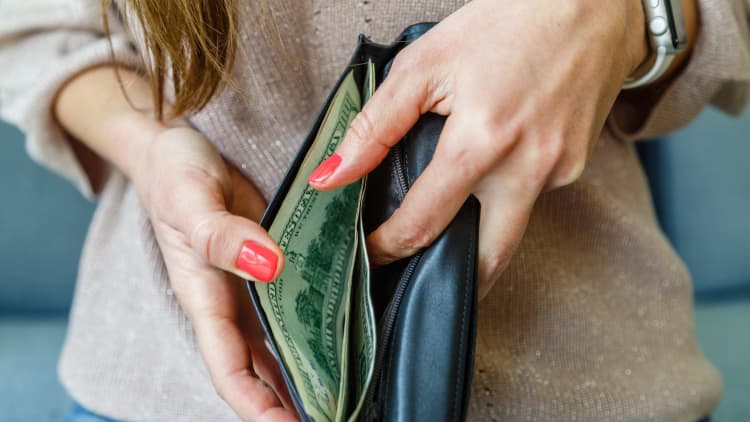- The number of Americans who say they are stretched too thin has shown no signs of improvement amid high prices and higher interest rates.
- Federal Reserve Chair Jerome Powell recently said “inflation is still too high,” indicating that interest rates will stay higher for longer.
- One bright spot: Some online savings account rates are now paying more than 5%, which is the most savers have been able to earn in nearly two decades.

‘Inflation is still too high’
The Federal Reserve is expected to announce it will leave rates unchanged at the end of its two-day meeting this week, even though Fed Chair Jerome Powell recently said “inflation is still too high.”
Recent data is painting a mixed picture of where the economy stands. Inflation has shown some signs of cooling, but the core personal consumption expenditures price index, which the Fed uses as a key measure, increased 0.3% in September.
The consumer price index, another closely followed inflation gauge, also rose at a slightly faster-than-expected pace over the month, boosted by higher prices for food, gas and shelter. As a result, real average hourly earnings fell.
The consensus among economists and central bankers is that interest rates will now stay higher for longer.
Households must make ‘tough choices’
“Many households are seeing their finances stretched thinly by the combination of high prices for goods and services as well as high interest rates,” said Brett House, economics professor at Columbia Business School.
“Many are having to make tough choices to defer discretionary spending in order to stay on top of their loan payments and the costs of necessities,” he added. The resumption of student loan payments only adds to this stress.
Some 74% of Americans say they are stressed about finances, according to a separate CNBC Your Money Financial Confidence Survey conducted in August. Inflation, rising interest rates and a lack of savings contribute to those feelings.
That CNBC survey found that 61% of Americans are living paycheck to paycheck, up from 58% in March.
Many households have tapped their cash reserves over the past few months, LendingClub and other reports show.
Nearly half, or 49%, of adults have less savings or no savings compared to a year ago, according to a Bankrate survey.
On the upside, those with remaining balances, which are concentrated among high-income households, are seeing “better interest payments than they’ve received at any time in the recent past,” House said.
High-yield savings accounts, certificates of deposit and money market accounts are now paying more than 5%, according to Bankrate, which is the most savers have been able to earn in nearly two decades.
Subscribe to CNBC on YouTube.
Don’t miss these CNBC PRO stories:
